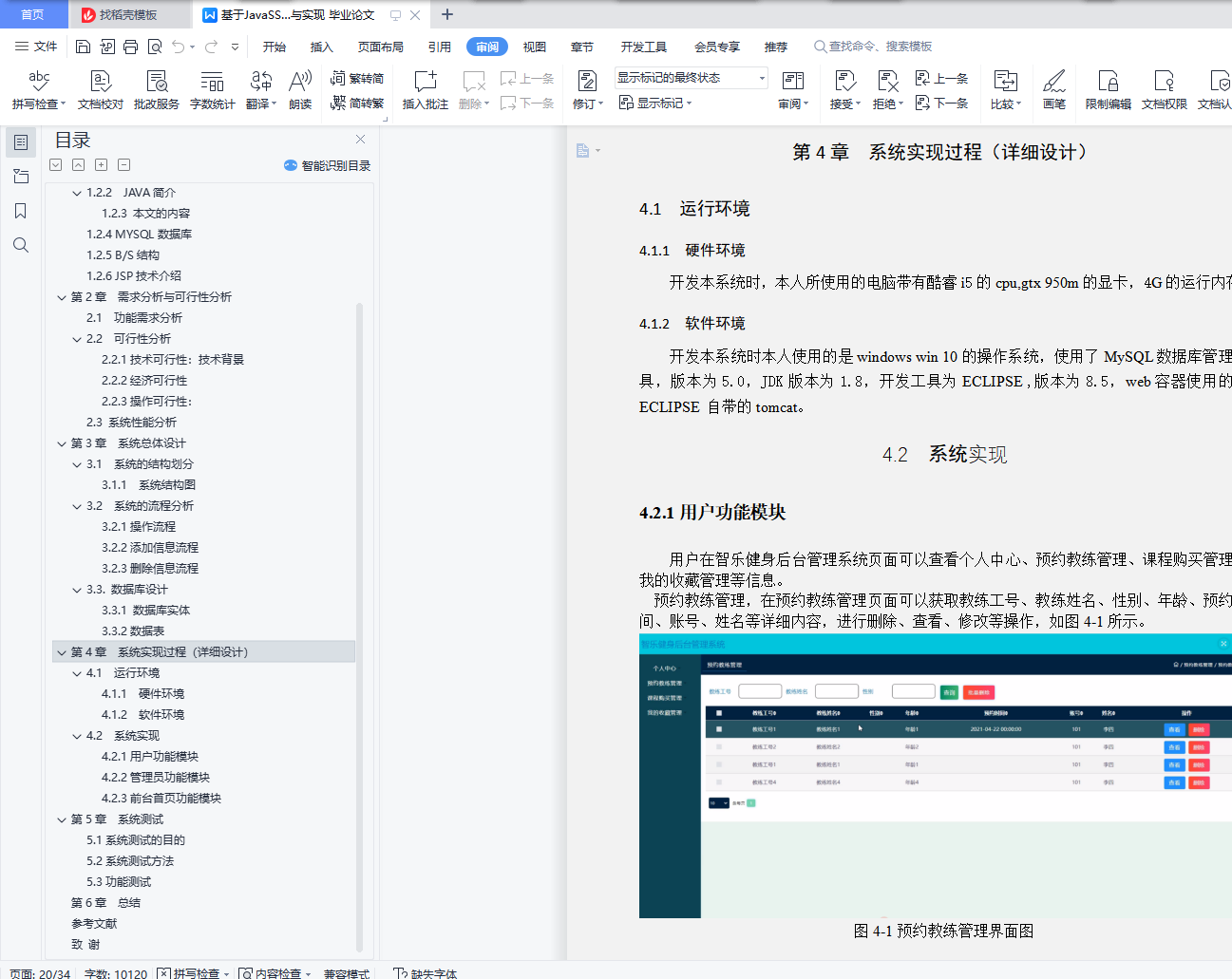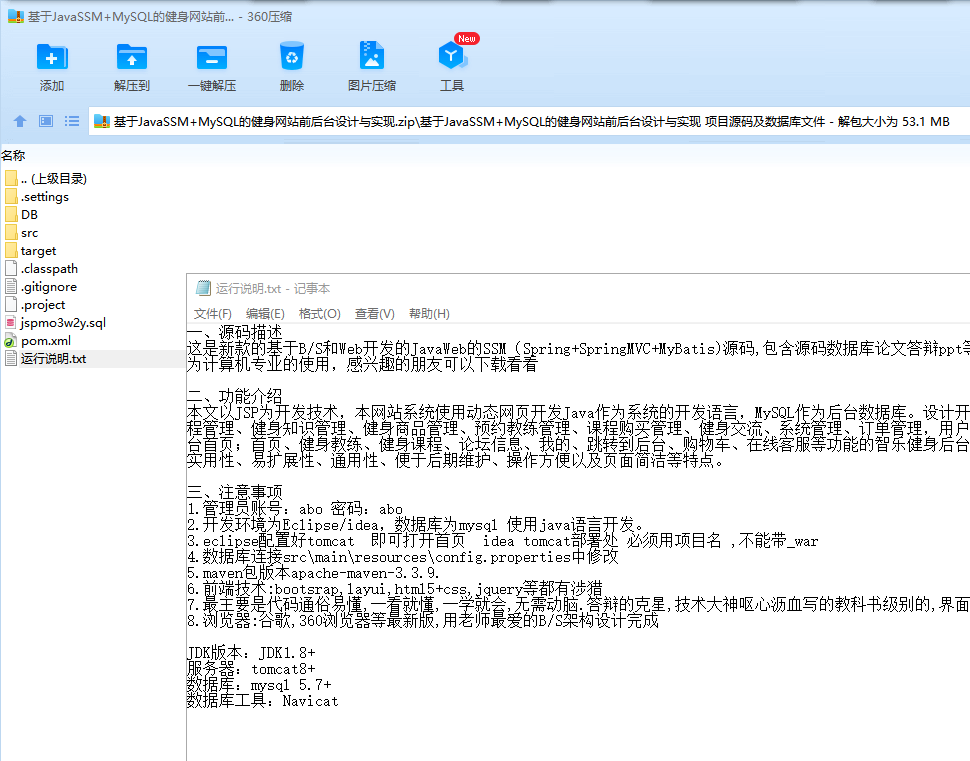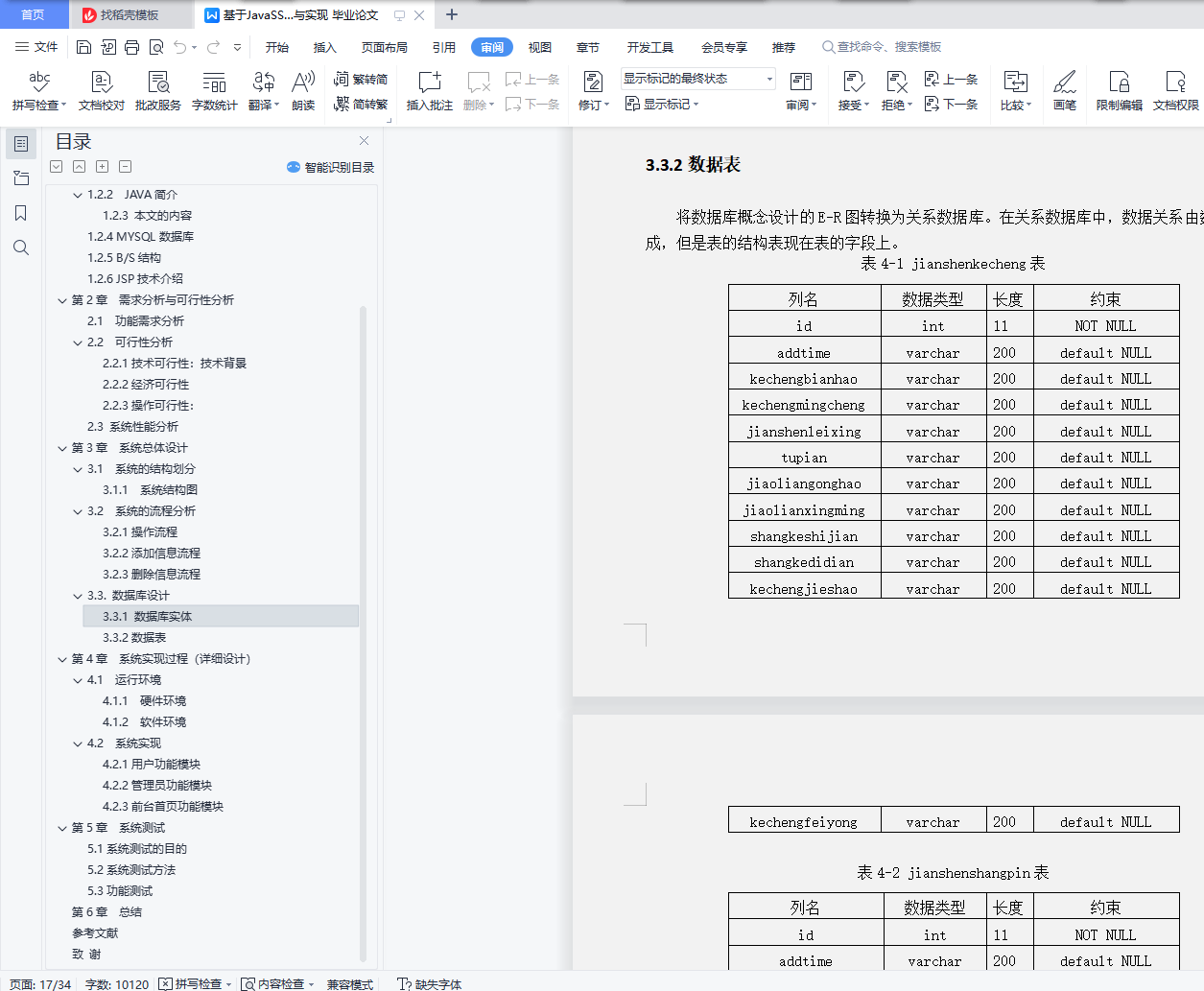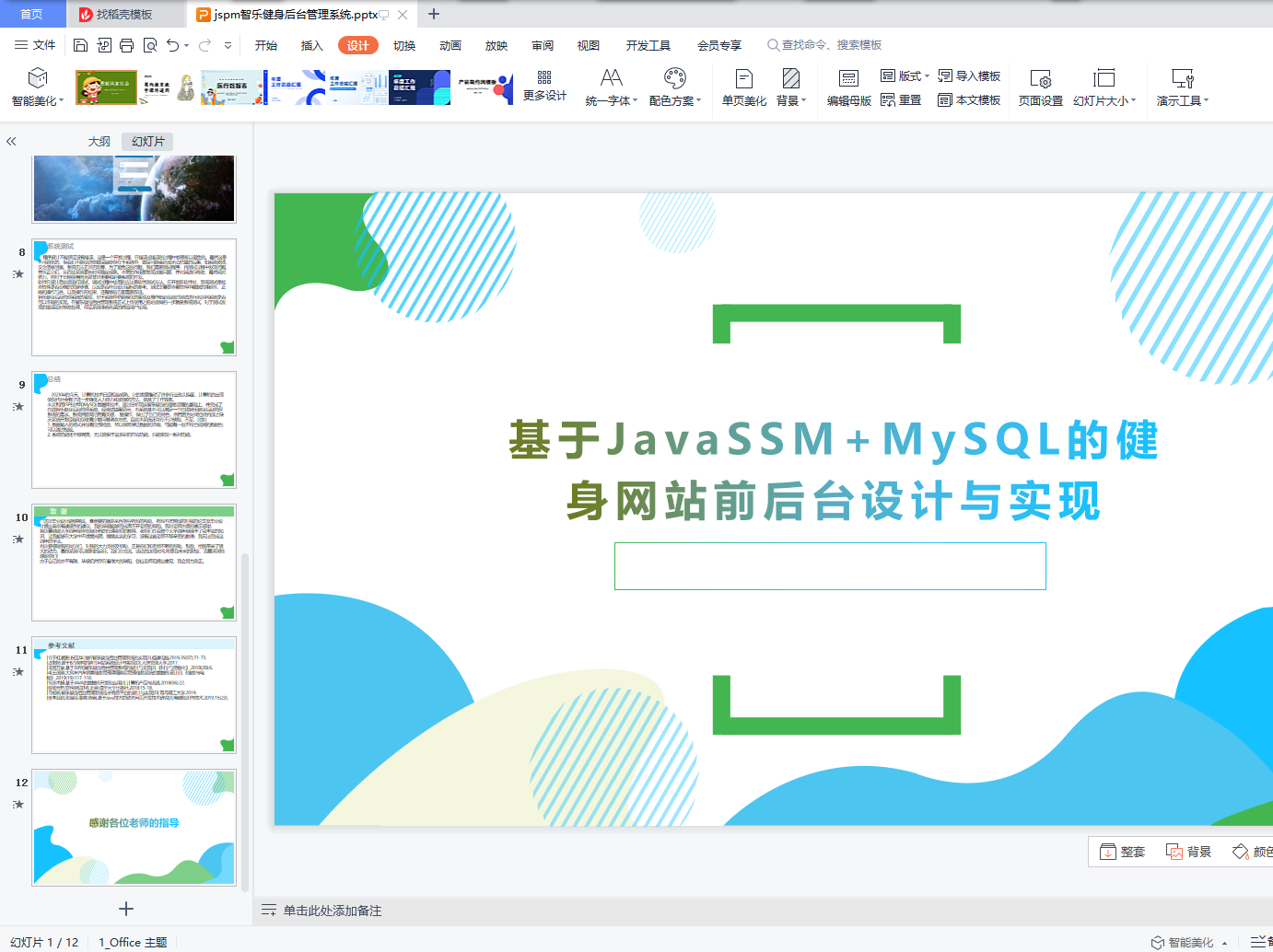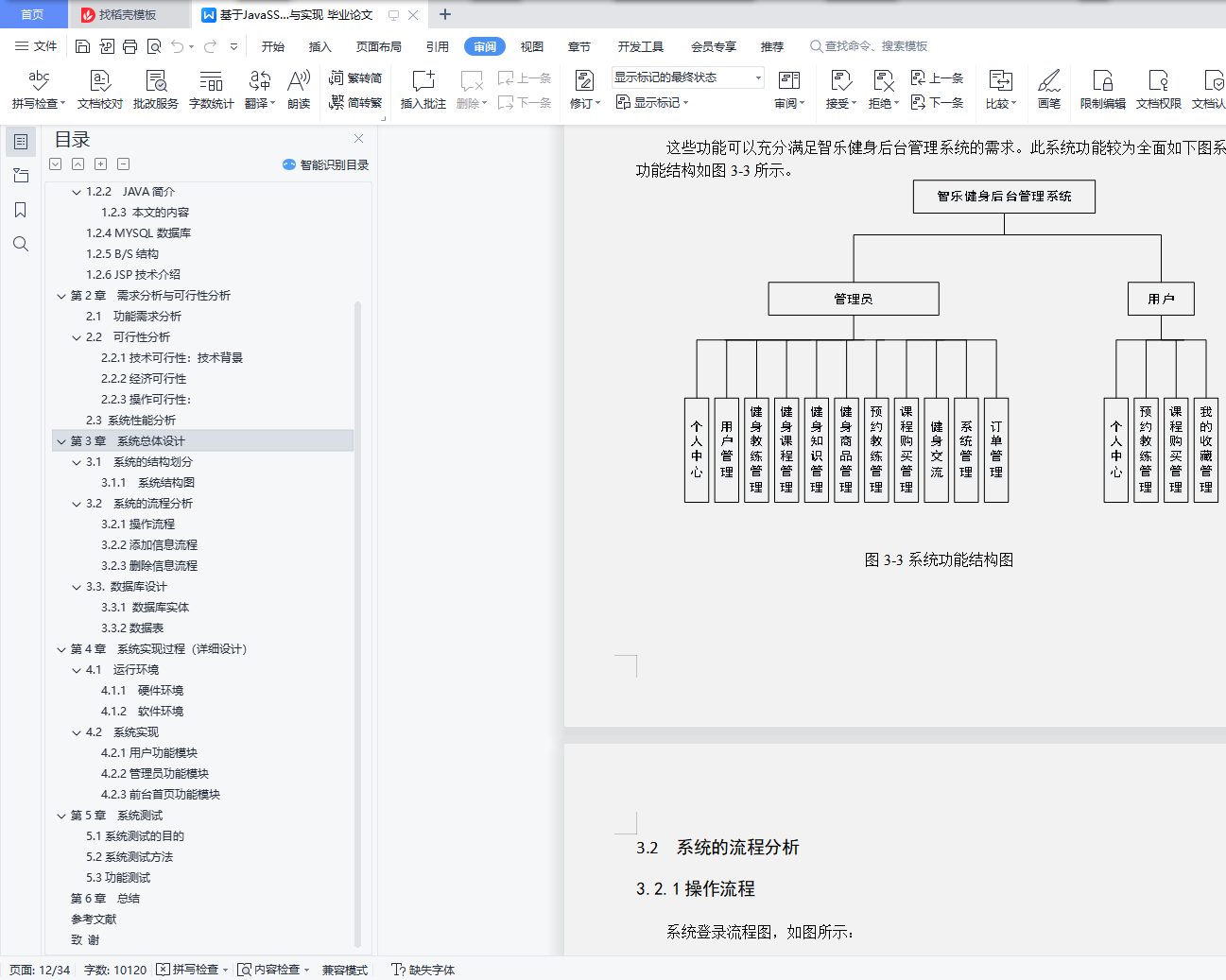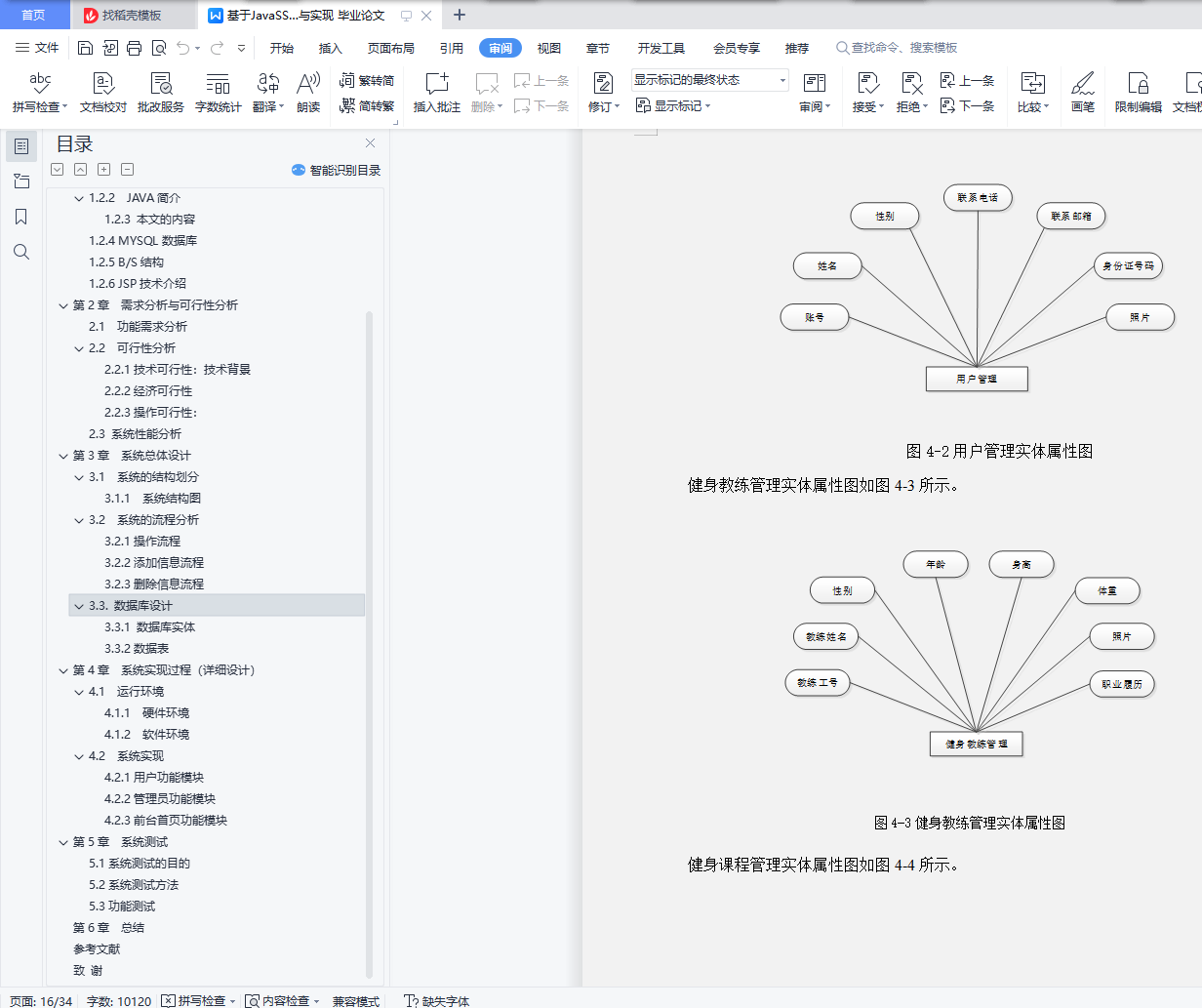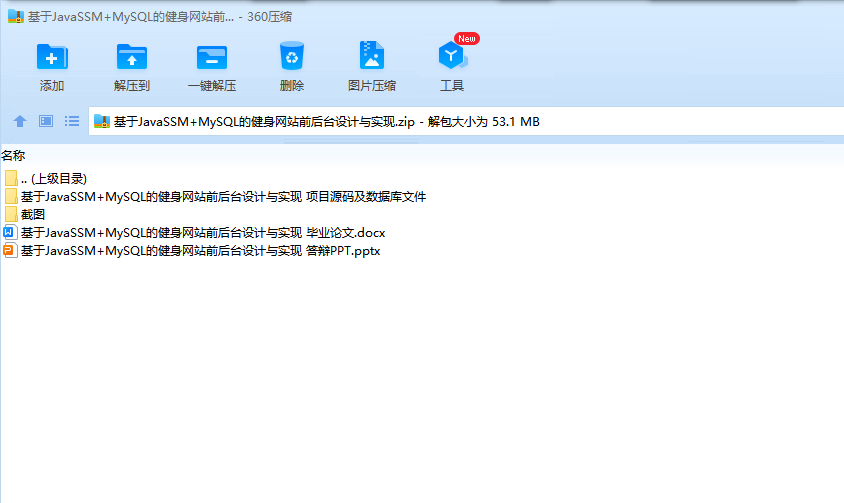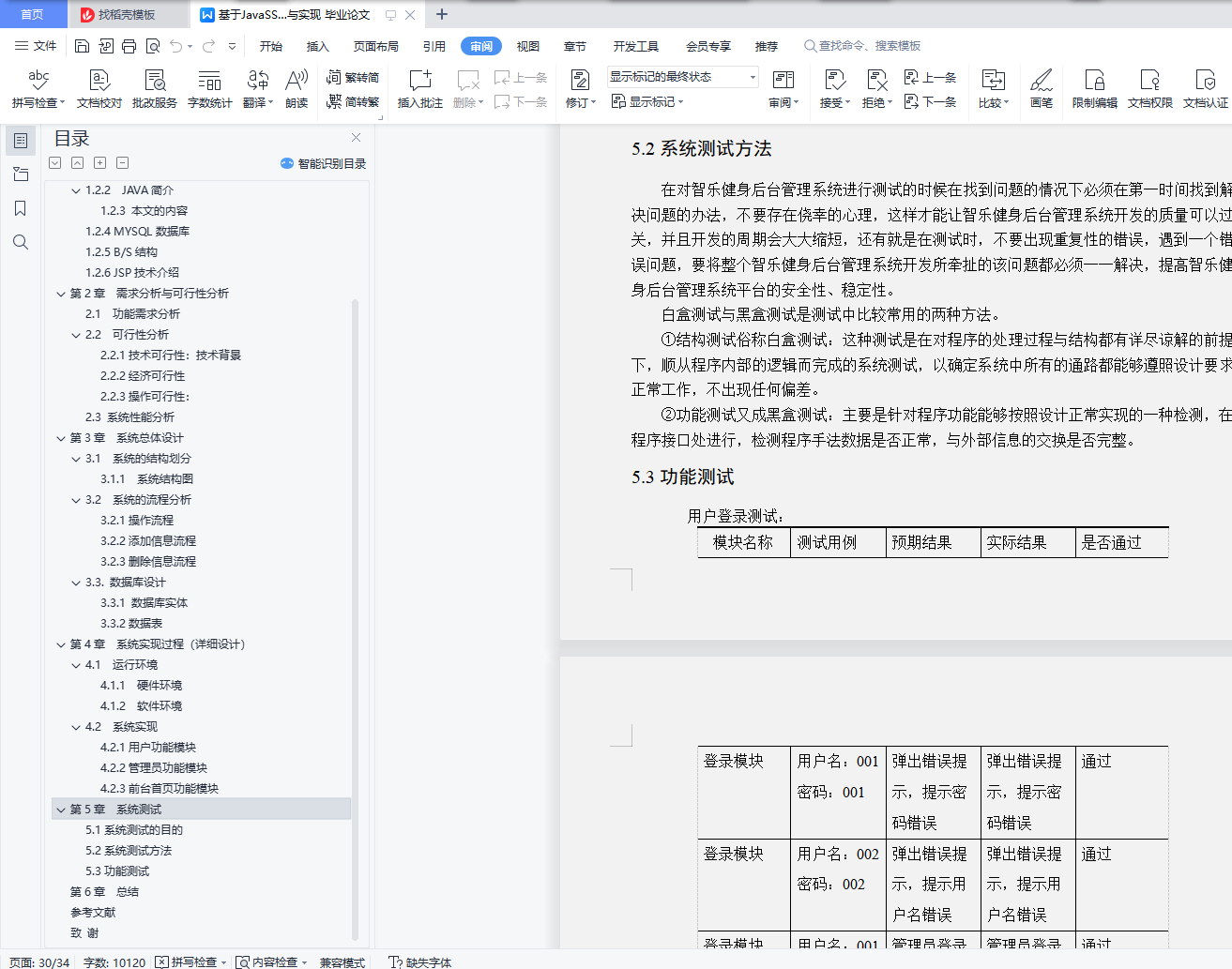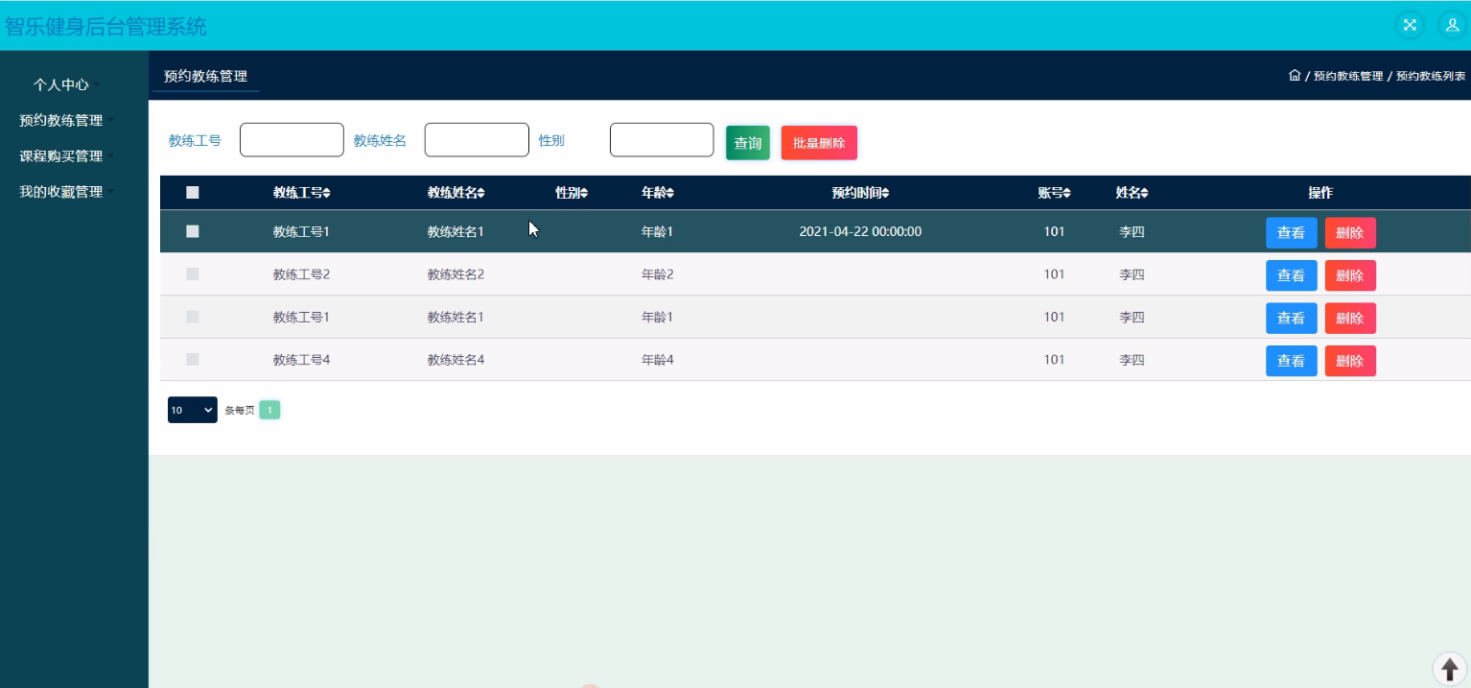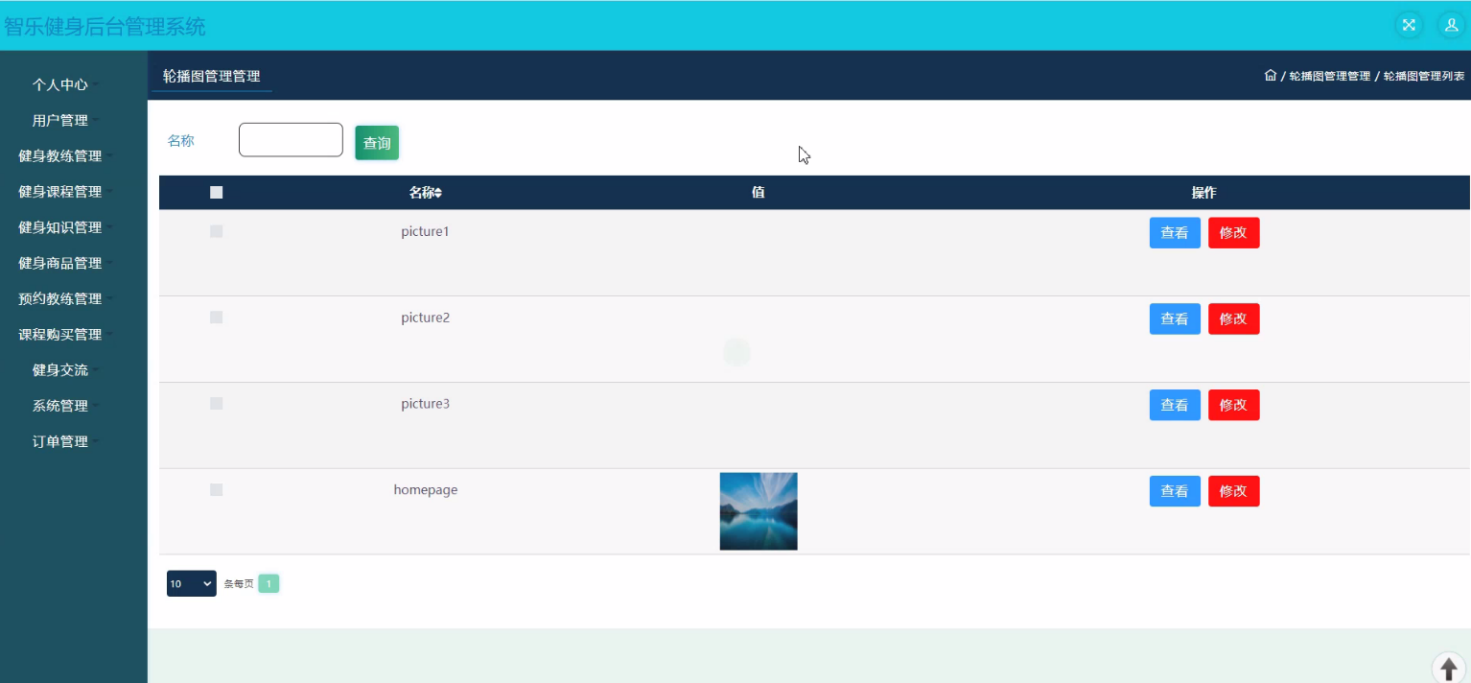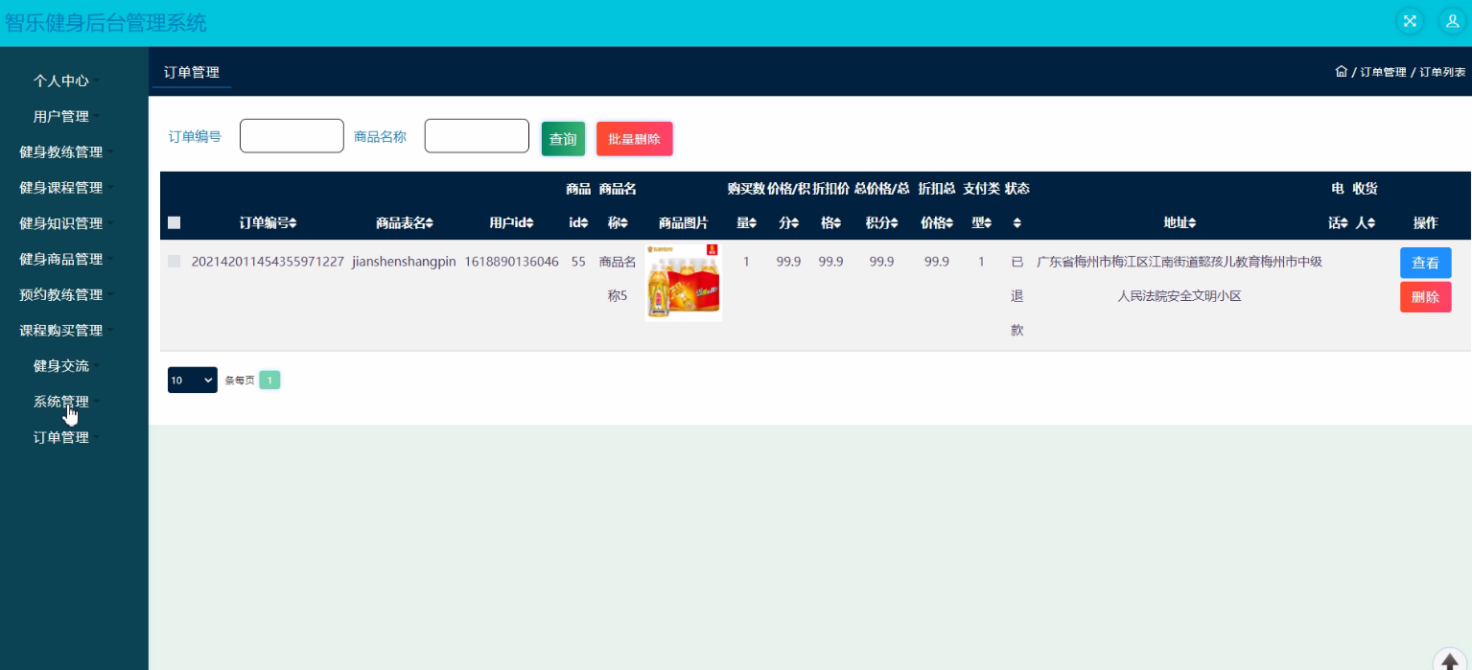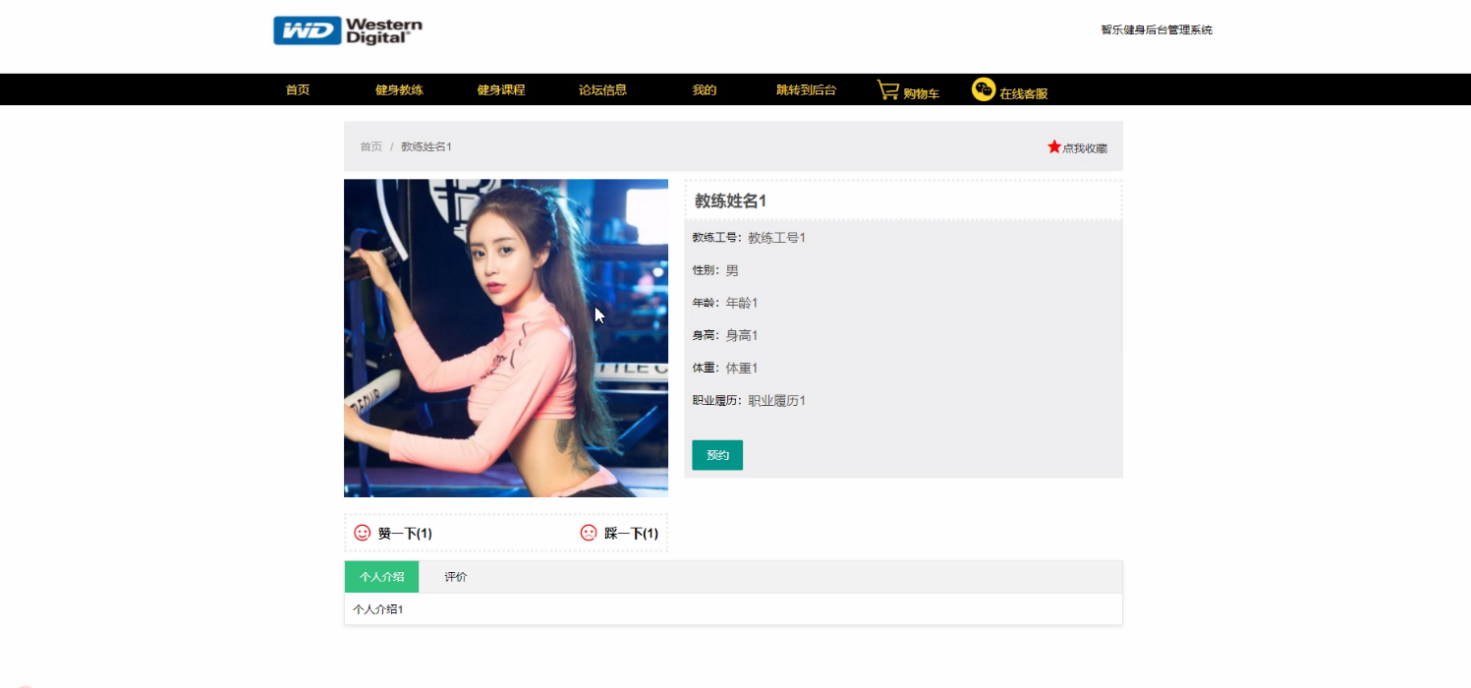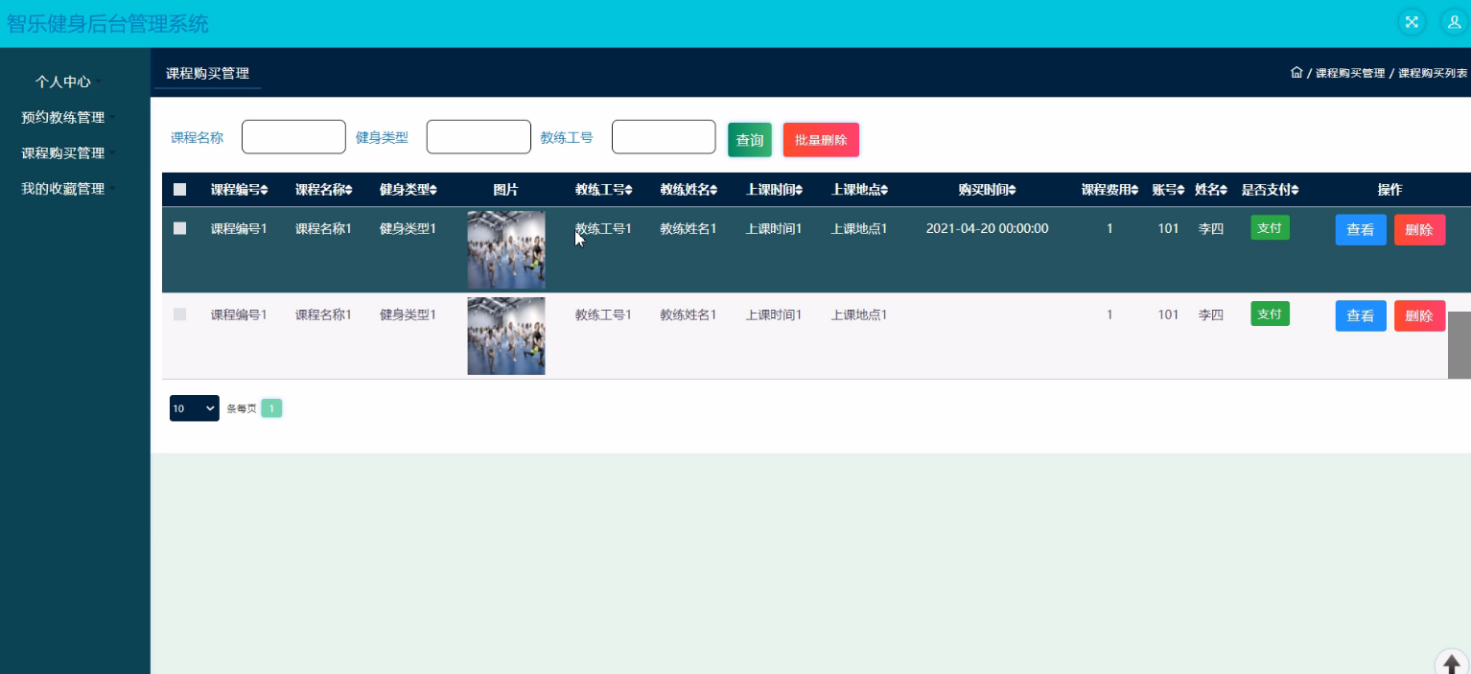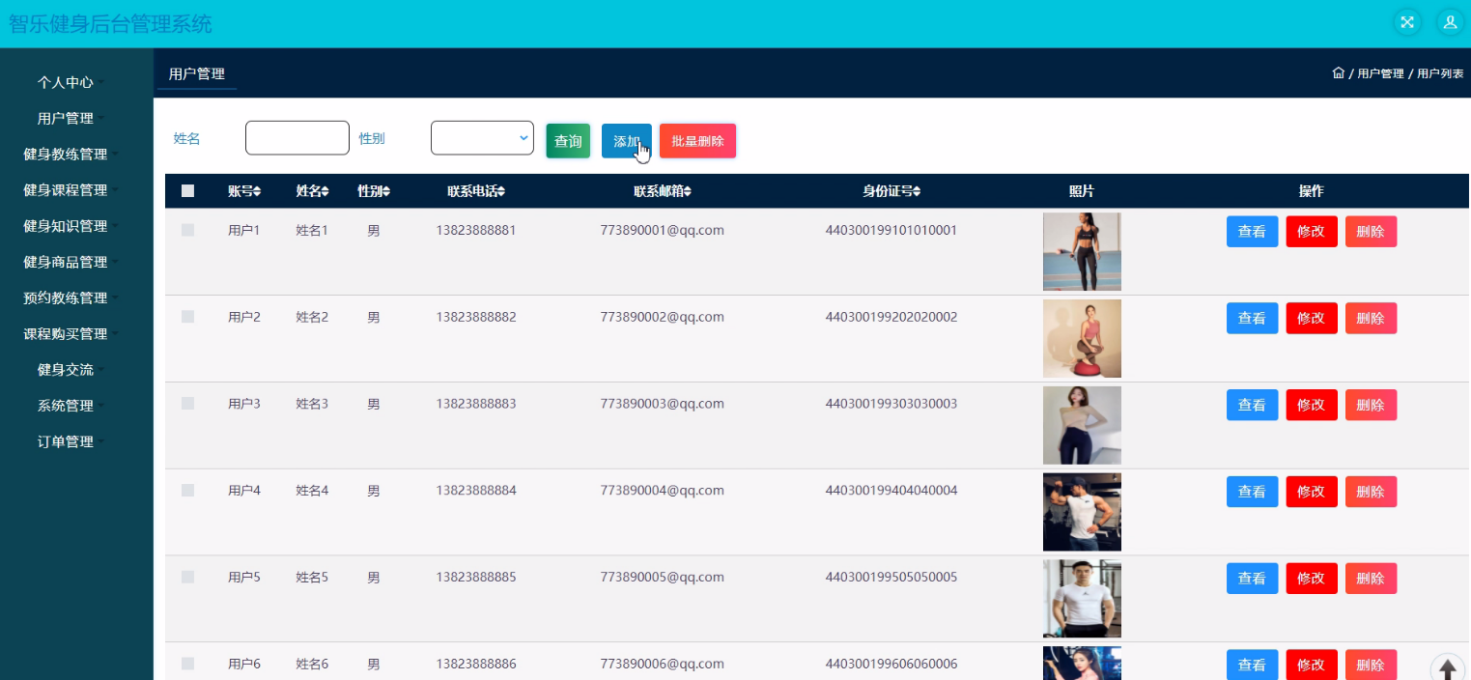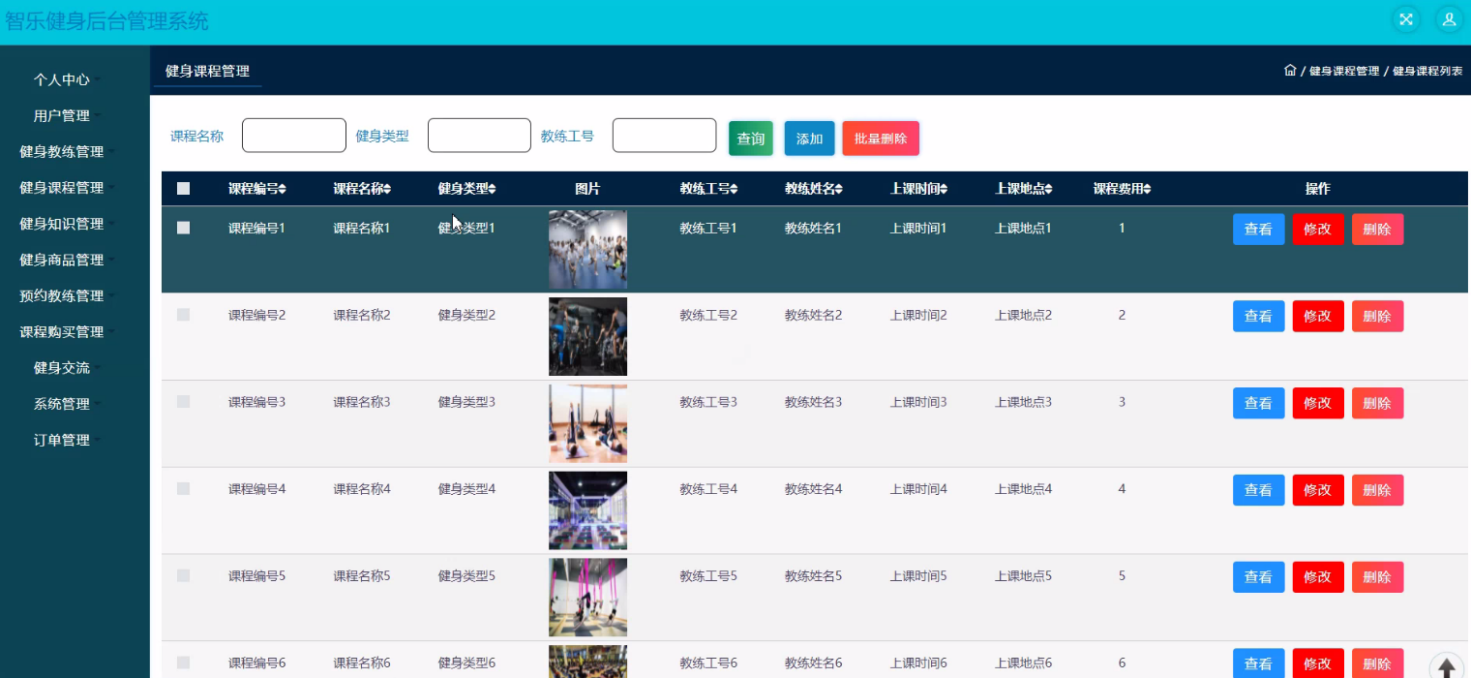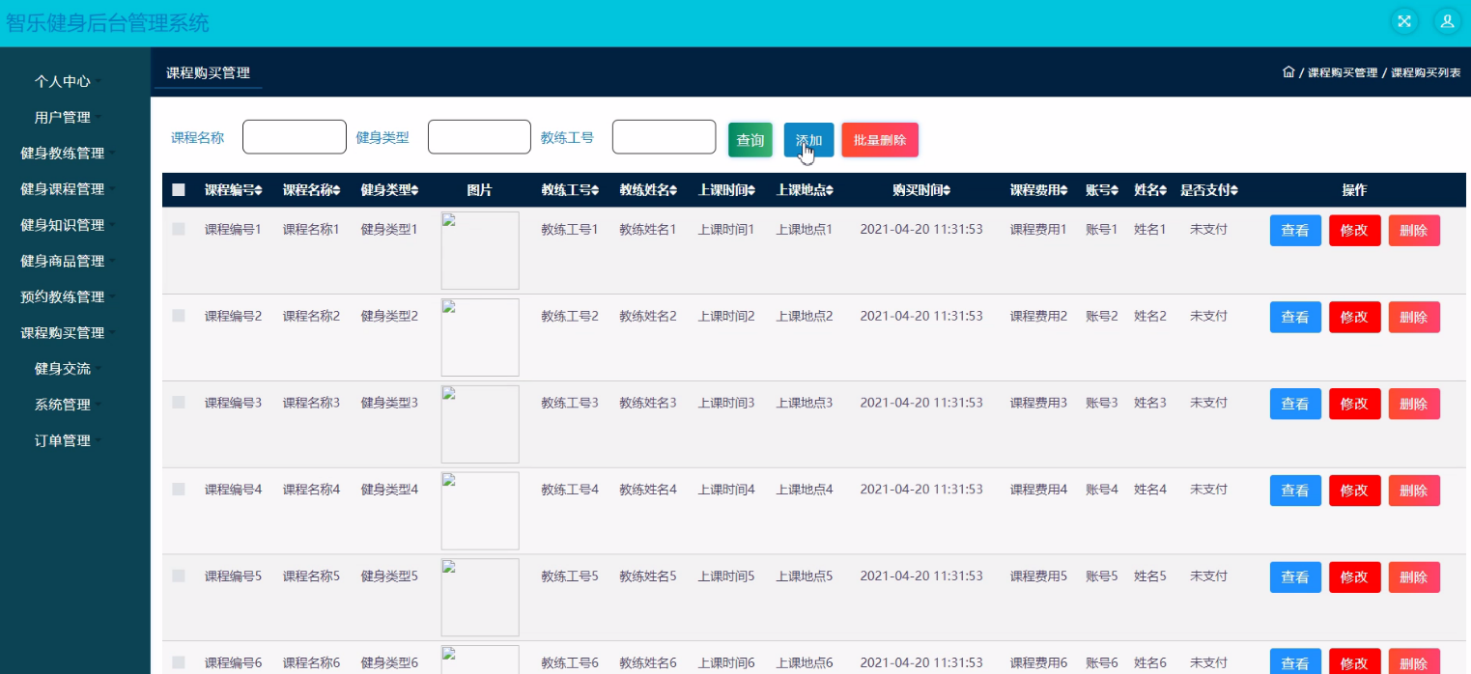摘 要
智乐健身后台管理系统采用B/S模式,促进了智乐健身的安全、高效、快捷的发展。传统的管理模式还处于手工处理阶段,管理效率极低,随着用户的不断增多,传统基于手工管理模式已经无法满足当前用户需求,随着信息化时代的到来,使得智乐健身后台管理系统的开发成了必然。
本网站系统使用动态网页开发Java作为系统的开发语言,MySQL作为后台数据库。设计开发了具有管理员;个人中心、用户管理、健身教练管理、健身课程管理、健身知识管理、健身商品管理、预约教练管理、课程购买管理、健身交流、系统管理、订单管理,用户;个人中心、预约教练管理、课程购买管理、我的收藏管理,前台首页;首页、健身教练、健身课程、论坛信息、我的、跳转到后台、购物车、在线客服等功能的智乐健身后台管理系统。在设计过程中,充分保证了系统代码的良好可读性、实用性、易扩展性、通用性、便于后期维护、操作方便以及页面简洁等特点。
关键词:智乐健身后台管理系统;B/S模式;java语言;
Abstract
The background management system of Zhile fitness adopts B / S mode, which promotes the safe, efficient and fast development of Zhile fitness. The traditional management mode is still in the stage of manual processing, and the management efficiency is very low. With the increasing number of users, the traditional manual management mode has been unable to meet the needs of current users. With the advent of the information age, the development of Zhile fitness background management system has become inevitable.
The website system uses dynamic web development, Java as the development language of the system, MySQL as the background database. Design and develop a system with administrator; Personal center, user management, fitness coach management, fitness course management, fitness knowledge management, fitness commodity management, appointment coach management, course purchase management, fitness communication, system management, order management, user management; Personal center, appointment coach management, course purchase management, my collection management, front page; Home page, fitness coach, fitness courses, forum information, my, jump to the background, shopping cart, online customer service and other functions of Zhile fitness background management system. In the design process, it fully ensures the good readability, practicability, expansibility, universality, easy to maintain, easy to operate and concise page of the system code.
Key words: Zhile fitness background management system; B / S mode; Java language;
目 录
第1章 绪论 1
1.1 课题背景及研究意义 2
1.1.1 课题背景 3
1.1.2 研究意义 4
1.2 开发工具的选用及语言介绍 5
1.2.1 语言介绍 7
1.2.2 Java简介 9
1.2.3 本文的内容 11
1.2.4 MYSQL数据库
1.2.5 B/S结构
1.2.6 JSP技术介绍
第2章 需求分析与可行性分析
2.1 功能需求分析
2.2 可行性分析
2.2.1技术可行性:技术背景
2.2.2经济可行性
2.2.3操作可行性:
第3章 系统总体设计
3.1 系统的结构划分
3.2 系统的流程分析
3.2.1操作流程
3.2.2添加信息流程
3.2.3删除信息流程
3.3. 数据库设计
3.3.1 数据库实体
3.3.2数据表
第4章 系统实现过程(详细设计)
4.1 运行环境
4.1.1 硬件环境
4.1.2 软件环境
4.2 系统实现
4.2.1用户功能模块
4.2.2管理员功能模块
4.2.3前台首页功能模块
第5章 系统测试
5.1系统测试的目的
5.2系统测试方法
5.3功能测试
第6章 总结
参考文献
致谢
